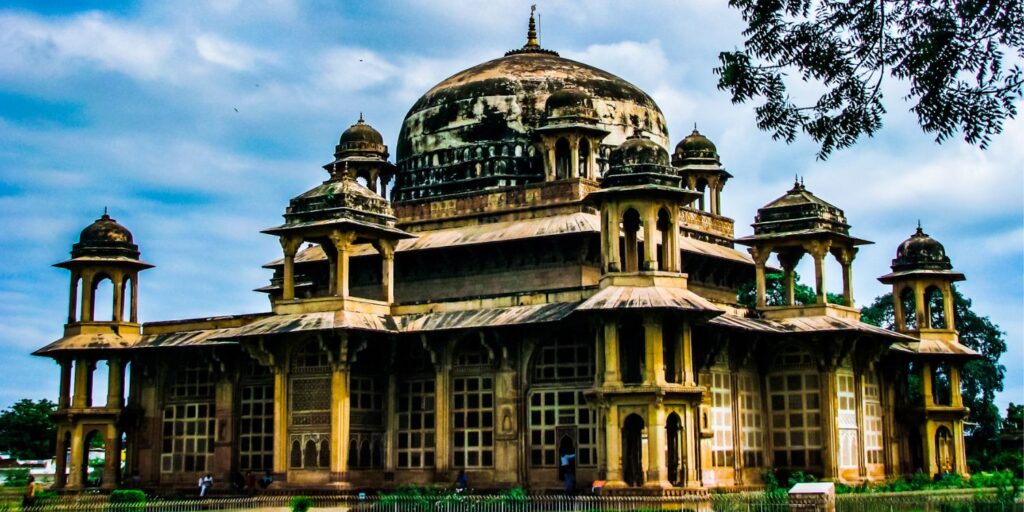Welcome to the enchanting realm of Gwalior, where history whispers tales of mysticism and music in Tansen Tomb.
However, during the Eid festivities, I embarked on a journey to explore the twin tombs of Tansen and Mohammad Ghaus, nestled amidst the city’s myriad heritage monuments.
Further, as I delved into the heart of Gwalior’s architectural marvels, the Tansen tomb entry fee captivated me with its timeless allure, embodying the pinnacle of Indo-Islamic artistry from the 16th century.
Step inside, and you’ll be greeted by the grandeur of Mughal architecture. Hexagonal pillars adorn each corner, and a square layout is crowned by a resplendent dome adorned with azure ceramic tiles.
Further, the intricate details extend to the hexagonal domed kiosks at the corners, complemented by gracefully sloping eaves that adorn the exterior.
1. A little bit about Tansen
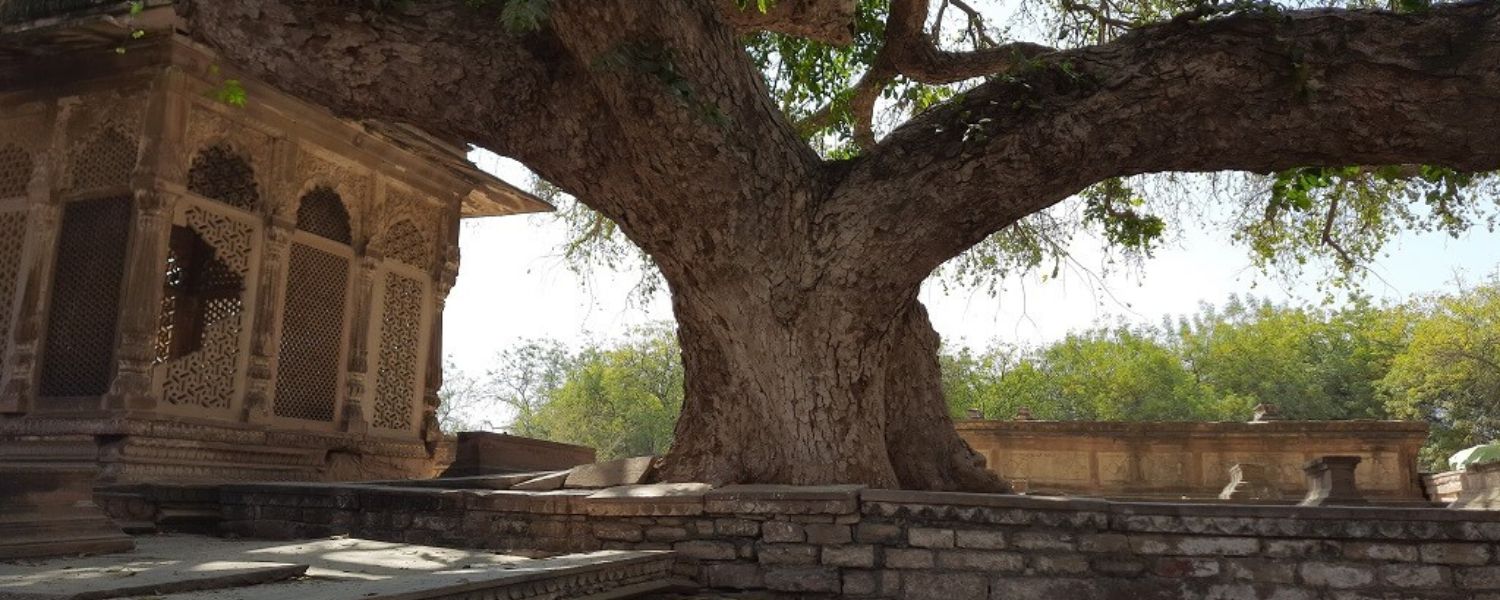
Furthermore, from his early days to his illustrious tenure in Akbar’s court, Tansen’s journey encapsulates musical brilliance and cultural amalgamation.
Born into a renowned Hindu family in Gwalior, Tansen, initially named Ramtanu, inherited his musical acumen from his father, a celebrated musician and poet.
However, under the tutelage of Swami Haridas, the court musician of Raja Man Singh Tomar, young Ramtanu honed his craft and earned the appellation “Tansen” bestowed upon him by the Maharaja.
During this formative period, Tansen’s artistic horizons expanded through encounters with Mohammad Ghaus, a revered Sufi saint and poet.
Further, immersed in the Bhakti movement, Tansen pioneered the shift of musical expression from classical Sanskrit to vernacular languages like Brijbhasha and early Hindi.
However, Tansen’s genius truly shone during his tenure in the court of Akbar. Revered as the foremost among the “nav ratans,” Tansen’s compositions, notably raag Deepak and raag megh malhar, attained legendary status.
Mainly, Tales of his performances, evoking miracles like spontaneously lighting lamps and summoning rains, abound in the annals of Akbar’s reign.
Today, his legacy endures, immortalized in the serene grandeur of the Tansen Tomb, a testament to his enduring influence on Indian classical music, and you can taste Madhya Pradesh famous food.
2. Tombs of Mohammad Ghaus and Tansen
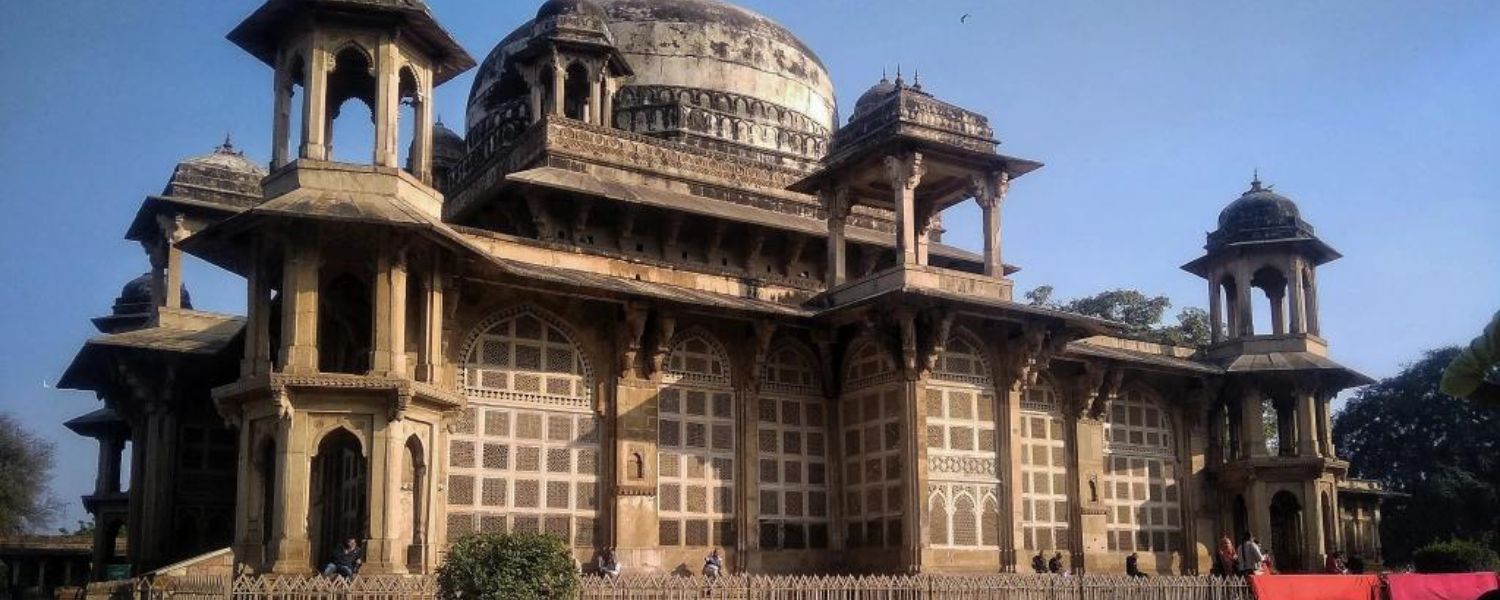
Conflicting historical narratives surround the legendary musician Tansen’s demise, with varying accounts of his final rites. Some sources suggest adherence to Muslim customs, while others indicate Hindu rituals.
Transitioning into the present, visitors can delve into this intriguing blend of Tansen tomb history and folklore at the Gwalior Fort’s captivating sound and light show.
Here, the narrative unfolds, depicting Akbar’s homage to Tansen by summoning musicians nationwide for his funeral procession.
Today, Tansen’s resting place lies adjacent to the tomb of Mohammad Ghaus, forming a mausoleum complex in Gwalior.
This fusion of legacies adds depth to the region’s cultural tapestry, inviting exploration into Tansen’s enigmatic life and legacy.
For those intrigued by the convergence of music, history, and faith, the Tansen tomb Wikipedia offers a poignant reflection of India’s rich cultural heritage.
3. Tomb of Mohammad Ghaus
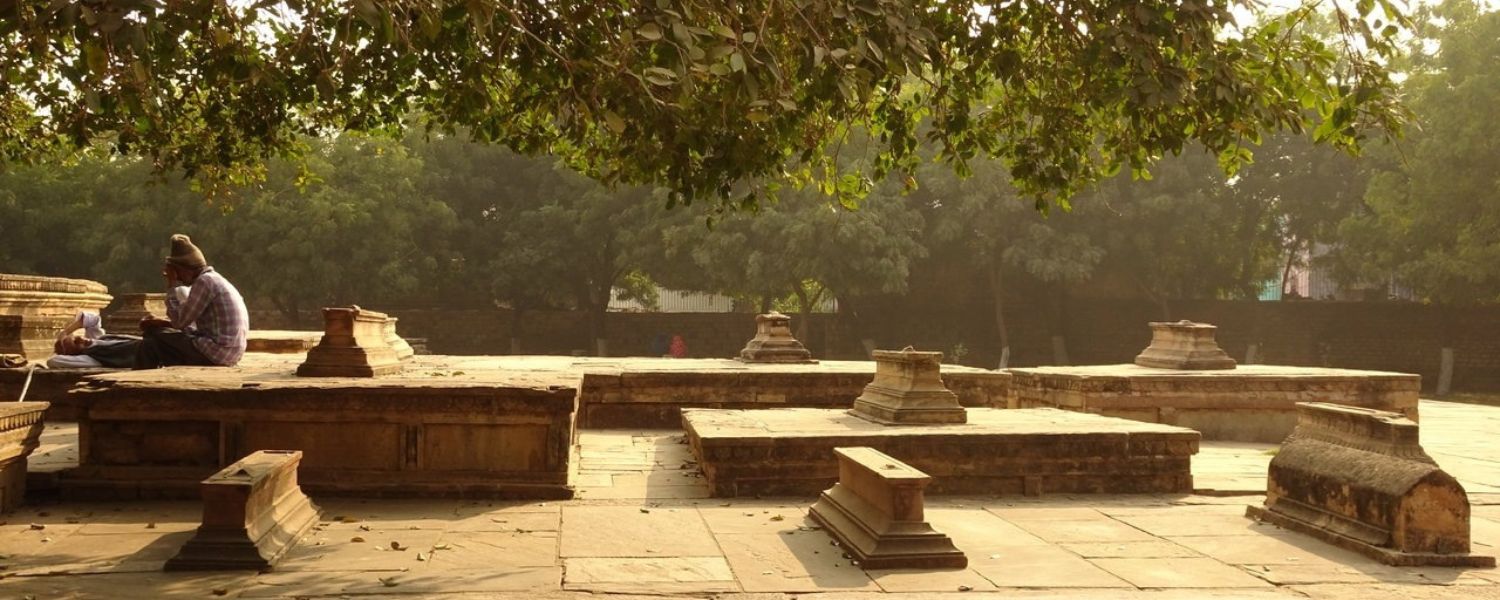
Gwalior, the Tomb of Mohammad Ghaus, is to the fusion of Islamic and Hindu architectural styles. This magnificent structure, often overshadowed by the nearby Tansen Tomb, boasts a striking square plan adorned with a grand dome slightly flattened compared to its contemporaries.
Once adorned with vibrant blue ceramic tiles, now only remnants remain, yet the intricate jaalis adorning the walls still captivate visitors with their delicate craftsmanship.
These jaalis not only embellish the tomb but also serve a functional purpose, allowing natural light and ventilation to permeate the interior.
As one traverses through the tomb, especially in the late afternoon, the interplay of light creates mesmerizing patterns on the floors and walls, evoking a sense of tranquility and admiration.
Moreover, the incorporation of hexagonal domed kiosks and sloping eaves, borrowed from Hindu architectural tradition, further enriches the cultural tapestry of this remarkable monument.
4. To reach the tombs

Navigating the city’s bustling streets to reach the illustrious Tansen Tomb, situated in the heart of Gwalior, can be a breeze with the suitable mode of transportation.
Opting for an auto-rickshaw offers a quintessential Gwalior experience, with its agile maneuvering through narrow lanes.
Alternatively, leveraging the convenience of Ola cab services provides a modern and reliable option. For those embarking on a full-day excursion or driving independently, parking arrangements are notably smoother near the back gate, particularly during peak visitation periods.
5. The architecture of the Tansen Tomb
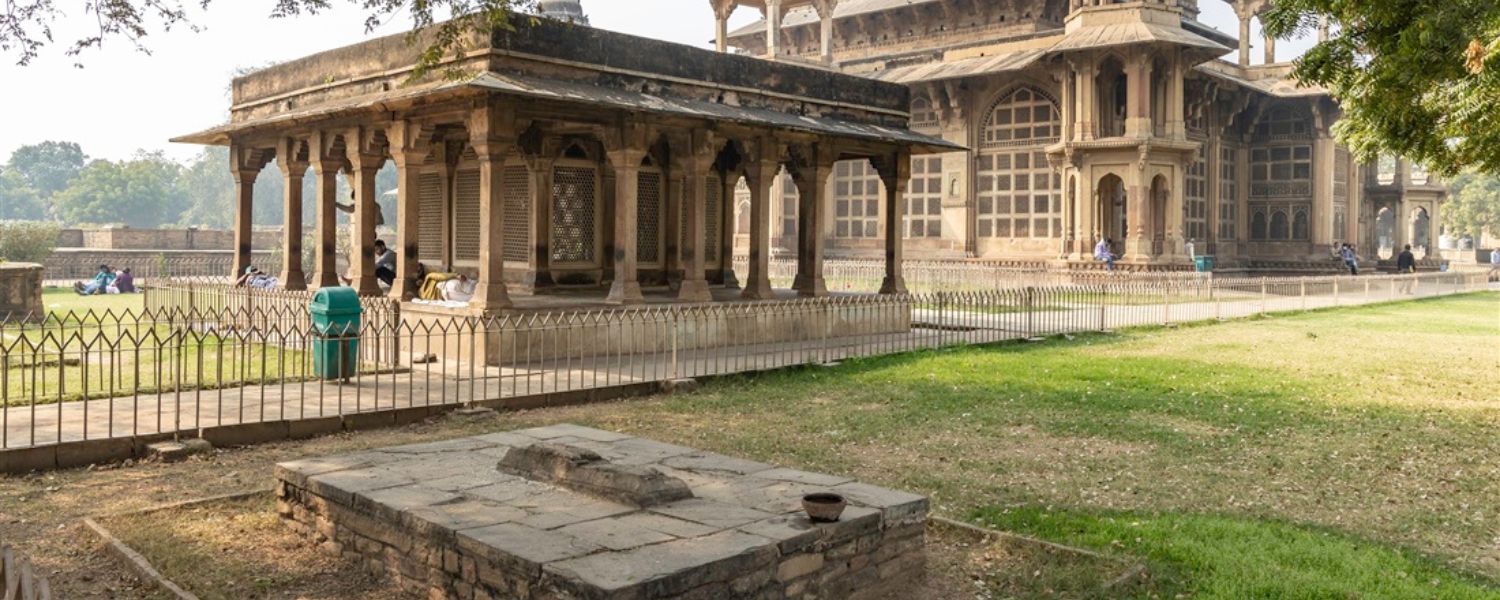
However, the Tansen Tomb is a testament to the architectural splendor of the Mughal era. Crafted from sandstone, this 16th-century marvel showcases quintessential features of Mughal architecture, enveloped within a sprawling garden expanse.
Additionally, seamlessly from its hexagonal pillars’ grandeur to its jali-work’s intricacy, the tomb exudes an aura of Tansen tomb timings elegance.
Visitors traverse its elevated platform and encounter Tansen’s smaller yet equally captivating tomb, adorned with delicate latticework and supported by majestic pillars.
Further within lies the resting place of Mohammed Ghaus, housed within a spacious chamber Tansen tomb open onto a tranquil verandah.
6. Annual Tansen Sangeet Samaroh

The Annual Tansen Sangeet Samaroh, a cherished event in Gwalior’s cultural calendar, unfolds at the historic mausoleum complex.
Celebrating the legacy of Tansen, a luminary of Hindustani classical music, this four-day extravaganza stands as a testament to his enduring influence.
Renowned classical maestros grace the occasion, rendering mesmerizing performances that captivate audiences year after year.
Transitioning from the vibrant musical festivities to the serene ambiance surrounding the Tansen Tomb, visitors are immersed in a realm where time seems to stand still. Adjacent to the tomb lies the picturesque garden, beckoning locals and tourists alike for tranquil picnics and strolls.
Conclusion
In conclusion, the Tansen Tomb is an enduring testament to Gwalior’s rich cultural heritage and artistic prowess. However, amidst the city’s historical tapestry, this Mughal marvel mesmerizes visitors with its exquisite architecture and tranquil ambiance.
Moreover, as the resting place of the legendary musician Tansen, it evokes a sense of reverence and awe, inviting exploration into the captivating saga of Hindustani classical music.
Moreover, the mausoleum complex, juxtaposed with the tomb of Mohammad Ghaus, epitomizes the harmonious coexistence of diverse cultural influences.
Through its annual Tansen Sangeet Samaroh and timeless architectural splendor, the Tansen Tomb continues to resonate with the echoes of music, perpetuating the legacy of a musical luminary across generations.
FAQ
Q. Where was Tansen buried?
A. Tansen’s remains were interred in the mausoleum complex of his Sufi master, Shaikh Muhammad Ghaus, in Gwalior. Annually, in December, the city hosts the Tansen Samaroh, a festival commemorating the legendary musician.
Q. What is the architecture of Tansen’s tomb?
A. The tomb exemplifies Mughal architecture, featuring hexagonal pillars at each corner and a square dome adorned with blue ceramic tiles.
However, hexagonal domed kiosks adorn the corners, while sloping eaves extend from the exterior, showcasing intricate craftsmanship.
Q. Who was Tansen’s wife?
A. Tansen married Hussaini, a lady of the court of Rani Mrignaini, in Gwalior, where he resided with his mentor, Mohammed Ghaus. Hussaini, a disciple of Swami Haridas, shared Tansen’s passion for music.
Q. What is Tansen famous for?
A. However, Tansen, born around 1500 in Behat or Gwalior, India, was a renowned musician and poet who was celebrated for his contributions to Hindustani classical music.
Revered for his dhrupad compositions and vocal prowess, Tansen’s legacy endures through his timeless melodies and raga compositions.
